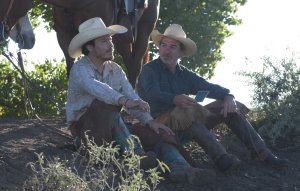Posted by Elena del Valle on May 17, 2006


The Pinker Tones and Belanova will perform at 2006 LAMC
Photos: LAMC
The 7th annual Latin Alternative Music Conference, LAMC, will continue its tradition of gearing people towards the marketing of Spanish-language alternative music and will once again be held in New York August 2-5, 2006. There is an early bird registration rate of $199 for those who those who register no later than June 1. Registration after that date is $249 and the price moves up to $299 a month before the event.
The event will feature free concerts in Central Park Summerstage, celebrate Brooklyn Festival at Prospect Park Bandshell and Museo del Barrio as well as daytime performances by independent artists in Manhattan’s Puck Building in SoHo. This year’s conference will expose Latin music trends such as reggaeton, rock, pop, electronica and hip-hop merged with local traditions.
“We take pride in being ahead of the curve in exposing people to the latest trends in Latin music,” said Josh Norek, LAMC co-founder and organizer. “We’ve grown every year since we put on this event. It’s a lot of work, and the industry recognizes LAMC is a leading forum to hear music.”

Josh Norek, LAMC co-founder and organizer
The conference will provide networking opportunities for leading artists, label executives, journalists, marketers, managers, retailers and programmers. Independent artists Chetes, The Pinker Tones, Motel, La Monareta, Superaquello, and Spigka have been invited to perform. In addition to the music, industry panelists will also be on hand and to discuss dealing with digital media, Spanish and English concerning American Latinos, revenue streams artists should know about, and artists crossing over, which Jose Tillan, president of MTV Latin America and MTV Tres, will cover.

Tomas Cookman, LAMC co-founder
Norek and Tomas Cookman founded LAMC in 2000. According to them, the event has averaged more than 20,000 concert fans and 1,000 music industry attendees. Past performers include Jorge Moreno, Si Se, Cielo Ceniza, and Los Abandoned. Past panelists include Stella Mars, marketing manager for DMX Inflight, and David Chitel, chairman and CEO for LatCom Communications. For additional information online, visit LatinAlternative.com. — Sergio Carmona
Posted by Elena del Valle on May 8, 2006
Click here to sponsor a HispanicMPR.com podcast

Dianamera album cover
“Dianamera” the album from Ecuadorian singer Diana Mera is available on iTunes, Apple’s online music store store that recently sold its billionth song. Described as “a strong and unique exponent of the Latin Pop genre,” Mera is a composer (BMI) and an actor; she was part of The Vagina Monologues play. She is recording her second music album with producer Gustavo Borner, a two time-Grammy winner, composer Dany Tomas and song writer Claudia Brant.
Mera was born in Quito, Ecuador and was raised in Lima, Peru. She has lived in México, Venezuela, Switzerland and the U.S. were she now resides. Mera, who always wanted to sing, started her career on television shows such as “Despierta América” on Univisión and “De Mañanita” on Telemundo.
ITunes has software that allows users to house or access a music library, Internet Radio, music store, video playing and buying and the popular Podcast format. Mera’s music becomes part of itunes thanks to Iris Distribution who extended a contract to SGM Records that enables distribution of her music worldwide.
To listen to “Besame” by Diana Mera from the “dianamera” soundtrack, scroll down on HispanicMPR.com until you see “Podcast” on the right hand side, then select “Besame,” hit the play button or download it to your iPod or MP3 player to listen on the go, in your car or at home. To download it, click on the arrow of the recording you wish to copy and save to disk. The podcast will remain listed in the May 2006 section of the podcast.
Click the button to hear the song:
Click here to sponsor a HispanicMPR.com podcast
Posted by Elena del Valle on May 4, 2006

GolTV Screaming Race
Photo: GolTV
Atlanta, Georgia – GolTV Television Network, which broadcasts only soccer in the U.S., recently introduced three interactive games as part of an overall multiplatform marketing strategy. The games, GolTV Trivia, GolTV Header’s Challenge and the Roaming Screaming Race, allow participants to test their skills and knowledge and win prizes.
“We always look for innovative ways to connect with consumers and fans,” said Eileen Montalvo, executive vice president, Marketing, GolTV. “This is why experiential marketing is so important. It creates a lasting impression. With our new initiatives and games, we look to extend the reach we already have by engaging the soccer fan at events (such as the National Soccer Coaches Association of America show as well as the Street Soccer and Kick-it 3V3 youth soccer tournaments) where they congregate. We also look to later extend some of the gaming offerings to our website.”
According to GolTV, consumers link their purchasing decisions increasingly to their experiences. Executives there believe that for GolTV to connect with the soccer aficionado it is important to bring some of the programming to life and make it participatory.
The GolTV Headers Challenge allows players to test their soccer skills by keeping GolTV’s icon, the blue soccer balls up in the air as long as they can in this virtual camera-action game. In the Roaming Screaming Race players enter a virtual stadium and scream GolTV as loud as they can. The player who screams the loudest will find that his soccer player has scored the goal. In GolTV Trivia participants compete to see who knows how a particular play will end.
In less than three years, GolTV has penetrated 31 percent of all Hispanic cable and satellite households, approximately 2.5 million homes. Delivering more than 1,500 soccer games each year from around the world, GolTV offers live games from some of the best leagues in the world with exclusive rights to games from Italy, Spain, Brazil, Colombia, Ecuador, El Salvador, Guatemala, Honduras, Bolivia and Uruguay.
GolTV also broadcasts live and live-on-tape games from Europe, Copa del Rey and International Friendly Games; the U.S. Open Cup; and tournaments in Central America. Other programming features from GolTV include GolTV News, two daily independent half hour-long wrap-up shows highlighting the latest and most important happenings in the world of soccer and 45/45 a weekly debate show taking a deep look into Latin American soccer. For more information online, visit GolTV.tv
Posted by Elena del Valle on May 2, 2006

Basilio Vargas from “The Devil’s Miner”
Photo: Kief Davidson & Richard Ladkani / ITVS
Washington, D.C. – The Independent Television Service (ITVS), Maryland Public Television (MPT), WHUT, and the Social Action and Leadership School for Activists (SALSA) will co-present two special screenings of “The Devil’s Miner” in Washington D.C. in May. The screenings are free and open to the public.
The film is an award-winning documentary in Spanish with English subtitles about two brothers who work in the Cerro Rico mines of Bolivia. Living in poverty with their mother in the mountains of Bolivia, 14-year-old Basilio and his 12-year-old brother, Bernardino, work long shifts in the silver mines, braving deadly conditions to earn enough money to attend school.
The first screening is at the American Film Institute Silver Theatre at 11 a.m. Saturday, May 6, 2006. The second screening is at Busboys and Poets at 5 p.m. Sunday, May 21, 2006. Both screenings will be followed by a discussion with Oscar Ordenes, a Bolivian native and promoter of Latin American humanities in D.C., and Kevin Healy, adjunct assistant professor, International Affairs, The Elliott School.
The Devil’s Miner received Chicago Film Festival Silver Hugo Best Documentary, Woodstock Film Festival Best Documentary, Humanitarian Award Mexico City Festival, Fipresci Prize International Film Critic’s Award in Toronto, German Camera Award Special Mention and Jerusalem Film Festival Spirit of Freedom Award Best Documentary awards.
The film will premiere on PBS’s Independent Lens, the Emmy Award-winning series hosted by Edie Falco, at 10 p.m. on Tuesday, May 23, 2006. Independent Lens, an anthology series, features documentaries and a limited number of fiction films of independent producers. Independent Television Service (ITVS) funds and presents award-winning documentaries and dramas on public television, innovative new media projects on the Web and Independent Lens.
Posted by Elena del Valle on April 28, 2006

Melquiades and Pete in “The Three Burials of Melquiades Estrada”
Photo: Dawn Jones EuropaCorp
“The Three Burials of Melquiades,” a Sony Pictures Classic movie written by Guillermo Arriaga and produced by Tommy Lee Jones opens to audiences in Los Angeles Friday, April 28. It is a human drama with the U.S. Mexico border and illegal immigrant issues as a backdrop. The movie received Best Screenplay Award for Guillermo Arriaga’s script and Best Actor Award for Tommy Lee Jones from the Cannes Film Festival.
Actors include Tommy Lee Jones, Barry Pepper, Dwight Yoakam, January Jones, Melissa Leo, and Julio Cedillo as Melquiades Estrada. In addition to Jones, producers included Michael Fitzgerald, Luc Besson, and Pierre-Ange Le Pogam.
The movie house will donate five percent of the proceeds to the Mexican American Opportunity Foundation (MAOF). Founded on February 7, 1963 and a United Way member agency since 1970, the Foundation is a community based organization dedicated to human services for the Spanish speaking population of Californa.
“We are extremely grateful to Sony Pictures Classics for this much needed and generous donation,” said Martin Castro, president, MAOF. “Particularly in trying times like these when our country appears to be passionately divided on so many fronts, it is refreshing and encouraging to be able to partner with Sony and thereby come closer to realizing our mission of helping California’s predominately Mexican Hispanic community with invaluable educational and professional development programs.”
Posted by Elena del Valle on April 27, 2006

Yvonne Gomez, Latin creative director,West Coast and Mexico, Peermusic
Photo: peermusic
Los Angeles, California – Peermusic, a large independent music publisher, promoted Yvonne Gomez to Latin creative director,West Coast and Mexico. Gomez was formerly West Coast Latin creative manager. In addition to her responsibilities of running the West Coast division of the U.S. Latin operation, she will now oversee all creative activity originating from the peermusic office in Mexico City; including the signing of new talent, catalog acquisitions and maintenance of current peerMexico writers.
“I’m extremely excited about this opportunity,” said Gomez. “Mexico is such an incredible springboard for talent and it’s a natural for our two offices to work as one. I’m happy to play a part in its growth and future successes.”
Gomez, who joined peermusic in 2003, has overseen the work of peer’s roster of songwriters and performers including multiple Grammy® award winner Juanes, Micky Huidobro of Molotov, Martha Gonzalez of Quetzal, Facundo Monty, Fobia and Los Pinguos. In addition to nurturing the careers of these artists, as well as working with peermusic’s Spanish language catalog, she continues to scout and sign new songwriters. Since joining peermusic, Gomez has signed worldwide deals with Plastilina Mosh, Locura Terminal, Charanga Cakewalk, Eddie G, as well as a J.V. Publishing deal with the regional Mexican production and writing team of Omar and Adolfo Valenzuela, also known as Twins House of Music.
“We are very fortunate to have someone with Yvonne’s talent and diverse background running our West Coast Latin Operations in the United States. I am very pleased that her skills will now also benefit the important territory of Mexico,” said Kathy Spanberger, president and COO, peermusic.
Gomez was born and raised in the Los Angeles San Gabriel Valley. She has worked for more than 17 years in the music industry beginning her career in 1989 when she founded Club Rock En Español, a grass roots organization created to promote Latin Rock to the Latin American youth in Los Angeles.
Posted by Elena del Valle on April 25, 2006

Orishas to perform on LATV
Photo: LATV
In April, LATV “En Concierto” has brought viewers and the in-studio audience live performances by Latin and non-Latin artists with a mix of English and Spanish language music. Offerings have included a variety of music genres such as hip hop, indie rock, and electronic music.
LATV “En Concierto” airs in LATV Studios in Los Angeles every Monday and Wednesday evenings at 9. The program also dedicates nights to specific genres or styles and has events like Ladies Night, A Night of Hip Hop, and Puerto Rican Rock Night.
The program has had Hip-Hop with artists Ana Alicia, Rican, and Generalz; Rock with The Redwalls, The 88, OK Go, and Puerto Ricans Bletzung & Ardnaxela; and Electronic with Belanova & Cubiky. Other popular artists that have performed include Julieta Venegas, Natalie y La Forquetina, Ill Nino, Gian Marco, Obie Bermudez and Jorge Drexler.
Artists that will perform in the last week of April include Orishas, Glory, Juan Gotti, and Bimbo, as well as Calle 13, Voltio, Yaga, Mackie. LATV Network targets bilingual Latino youth and is predominantly in English. LATV is one of the only networks in Los Angeles that reaches the bilingual demographic. Sergio Carmona
Posted by Elena del Valle on April 21, 2006
Click here to sponsor a HispanicMPR.com podcast

A 50-foot billboard attracts drivers’ attention at U.S./Mexico border
Photos: Joe Camporesi, Camporesi Productions
Las Vegas, Nevada – Call it the ultimate plasma TV or the world’s largest drive-in movie. Whatever you call it, since January 20, a larger-than-life 50-foot billboard has been playing to six lanes of traffic inching down the NAFTA highway where Laredo meets Nuevo Laredo. A sister billboard on the San Diego/Tijuana border has held 24 lanes of traffic interested since 2004, providing a valuable marketing tool for companies targeting the increasingly desirable Latino markets.
According to Border Billboard staff, Laredo is the number one inland port of entry between the United States and Mexico. More than four million drivers a month cross the San Diego/Tijuana divide, considered to be among the busiest border entrances in the world.
Because cars must wait for up to two hours to get across, most drivers take in the sight, sound and motion produced by two LED display video boards, one billion colors, two ticker displays, a 23 mm. pixel pitch and a 140-degree horizontal viewing angle, all communicated in English and Spanish.

Jennifer Stefano, owner and CEO, Border Billboard
Border Billboard owner and CEO Jennifer Stefano says no billboards exist in the U.S. like the two mega-signs she operates from the company’s headquarters in Las Vegas.
“The only billboard comparable to ours hangs above Times Square in Manhattan and you can’t hear that billboard and you sure can’t text-message it,” said Stefano. “We are capitalizing on the power of the $700 billion U.S./Hispanic market,”
A typical commercial sells for $10,000 a month and plays 144 times a day. To ensure optimum “face time,” Stefano places the billboard where cars are likely to see it, even where they “cannot even make a U-turn.”
The board is a hit with flirtatious young people who use cell phones to text-message each other across the 40-ft. amber ticker displays. “Hola Senorita, in the green Ford Explorer,” writes a high school boy to a pony-tailed teenager stuck in traffic near him. Within sight of thousands of commuters observing the exchange on-screen, the couple arranges to meet for a coke at a nearby McDonald’s.
Behind the scenes, security software, with a human editor as a back up, filters out inappropriate messages. Interspersed between commercials from advertisers such as Circuit City, Hummer, Best Buy, Coca Cola and Saturn, drivers are entertained by CNN news, weather and performances by Tejano recording artists. A low frequency radio station provides sound. Advertising is aimed at the 35 to 50-year-old demographic.
Click here to sponsor a HispanicMPR.com podcast
Posted by Elena del Valle on April 19, 2006
Click here to sponsor a HispanicMPR.com podcast

Cristina Godoy, producer and host, “El 63 Para Ti”
Photo: Cristina Godoy
Los Angeles, California – Spanish-language television station, KBEH-TV Channel 63, Los Angeles debuted its second season of interactive interviews with Spanish-speaking political, business, education, legal and community on “El 63 Para Ti,” a public service program designed to integrate the growing Latino community with local, political and community resources.
“El 63 Para Ti’s goal is to give Latinos in Los Angeles access to the local, political and community resources that they need to have a greater voice in this market,” said Eduardo Suarez, director, Programming and Production. “Through interviews with our guests we seek to be a catalyst for positive change in this community.”
The show covers topics such as immigration law, finances, politics, education and health. Previous interviews have included: representatives from the California Highway Patrol; attorneys discussing Orange County’s proposal to enable the police department to act as immigration officers; financial experts speaking about taxes; government representatives from the cities of Santa Ana, Garden Grove, South Pasadena; and experts and counselors working against gangs. During the program, viewers can also call in to a toll-free number with questions or to make comments.
“We are also always interested in speaking with political leaders and experts who can assist us in explaining new proposals to the Hispanic community such as initiatives on providing drivers licenses for undocumented people, the pros and cons of using credit or information on tax preparation,” said Cristina Godoy, producer and host, “El 63 Para Ti.”
The program, which airs on Saturdays and Sundays at 4 p.m. with encore presentations Monday through Friday at 6 a.m., plans a monthly leadership section to recognize accomplishments by individuals in the Hispanic community.
“We are seeking recommendations for Latinos who are making important contributions in our community and who we can acknowledge on our show as role models,” said Godoy.
KBEH-TV Channel 63 Los Angeles airs 24-hours of Spanish-language programming and is targeting the elusive 18-34 generation of Latinos. The independent local broadcast station reaches more than 5.4 million households, including 3.8 million pay-TV households, in the Los Angeles and Santa Barbara DMAs. KBEH-TV is owned and operated by Bela Broadcasting, LLC; a privately held company based in Miami, Florida. For more information online visit Canal63.com.
Click here to sponsor a HispanicMPR.com podcast
Posted by Elena del Valle on April 18, 2006
Click here to sponsor a HispanicMPR.com podcast

Singer Celia Cruz and documentary director Joe Cardona
Photo: CeliaCruzonline.com and WPBT South Florida
PBS (Public Broadcasting Service) will broadcast a 90-minute documentary, directed by Joe Cardona, about Cuban singer Celia Cruz during the 2006 Hispanic Heritage Month. Titled “Celia: The Queen,” the documentary recounts the life and music of Celia Cruz from her humble beginnings in Cuba to international fame.
Cardona includes first hand testimonies from the “Queen of Music” herself, musicians, artists and friends such as Quincy Jones, Johnny Pacheco, and Gloria Estefan. The documentary attempts to capture the impact Cruz had on music and her contribution to universal culture.
“She was there, in spirit, in the faces of the dancing crowd and through her treasured belongings, from her make-up table and small statuettes of saints, to her show-stopping gowns,” said Cardona, who was also co-curator of a 2005 Celia Cruz exhibit at the Smithsonian National Museum of American History, “Azúcar! The Life and Music Celia Cruz.”
A Celia fan since childhood, Cardona was working on her documentary when she passed in 2003. He completed the project with the cooperation of her family and friends.
The documentary will debut in private screenings in Miami, New York and Los Angeles, and will later air nationally on PBS. Publicitas LHM, headquartered in Miami, is managing limited marketing sponsorship opportunities for the media showings and the broadcast premier.
Cardona was born in San Juan, Puerto Rico, of Cuban parents. Some of his recent films, include “Bro,” a 2000 feature film which made its way to more than 15 film festivals, won the 2001 Flickapalooza Best Script Award and in that same year was nominated for an Alma Award in the Best Indie Film category; in 2001, he directed “Nuestra Risa,” a 60-minute documentary in English providing a look into the world of Latino humor.
He was also responsible for “Jose Marti: Legacy of Freedom,” a 2002 documentary narrated by Pulitzer Prize winning journalist Liz Balmaseda and Academy Award nominee, Andy Garcia. The film won the 2002 Best of Show Aurora International Platinum Award. Most recently he released “Cafe con Leche II,” a documentary sequel to the 1997 film about Cuban identity and a growing young Cuban-American generation.
Click here to sponsor a HispanicMPR.com podcast























